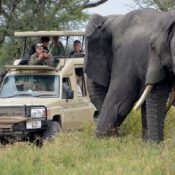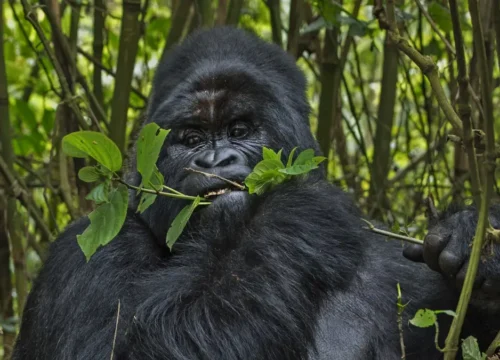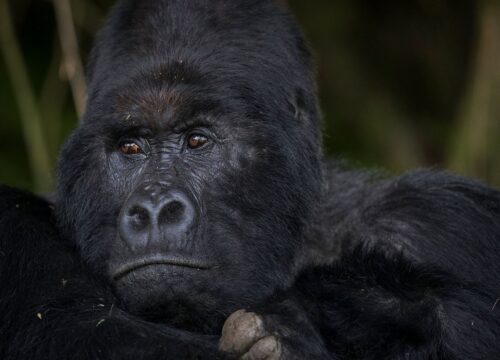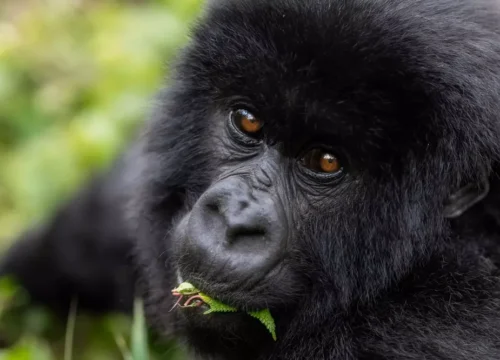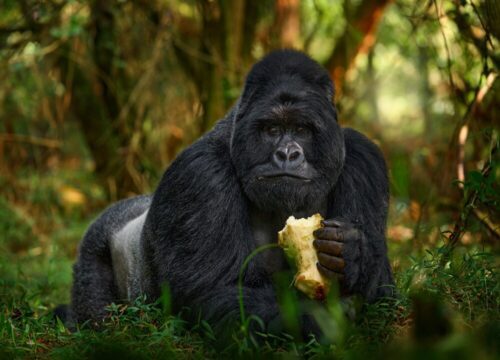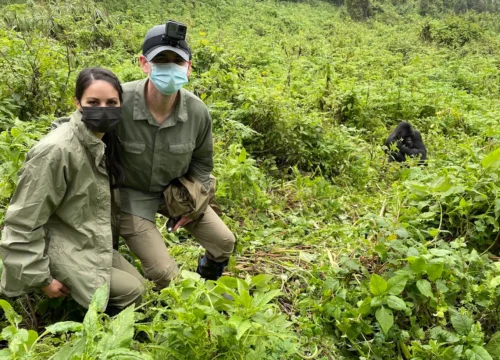Majete Wildlife Reserve
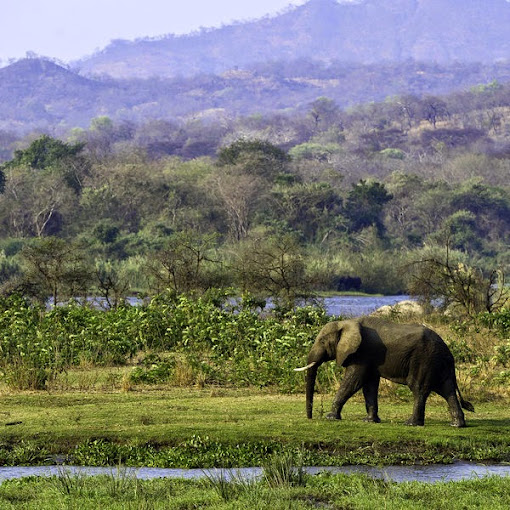
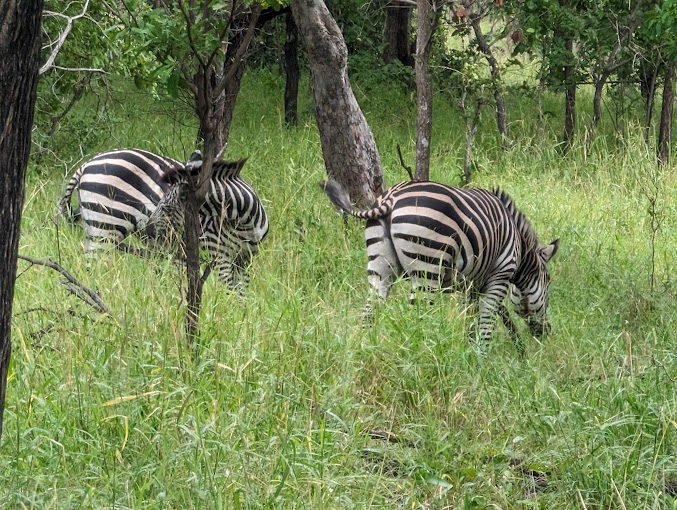
Majete Wildlife Reserve is Malawi’s major Big Five reserve and one of its top wildlife destinations. Badly neglected and heavily poached, the reserve was rescued in 2012 by the African Parks organization.
Since then, more than 2,500 animals have been reintroduced and populations of naturally occurring large animals have started to recover. Accommodation ranges from a community-owned tented camp to a five-star lodge.
Wildlife & Animals – Majete Wildlife Reserve
Due to extensive restocking of the reserve, Majete Wildlife Reserve now has a good variety of wildlife. Elephant, black rhino, buffalo, sable, waterbuck, warthog, nyala, Lichtenstein’s hartebeest, impala and zebra were all successfully reintroduced. Greater kudu, Sharpe’s grysbok, suni, hippo and spotted hyena were already in the reserve and their numbers are increasing in the secure environment.
Majete Wildlife Reserve Wildlife Highlights
Majete Wildlife Reserve is now a Big Five reserve – lions were the last species to be reintroduced in 2015. Four lions were flown in from South Africa, the first time these animals have been relocated in this way. Unfortunately, one lion died during the flight but three survived and managed to breed in Majete. The lions are relaxed, and are seen regularly.
Best Time for Wildlife Viewing
The Dry season, from May to October, is the best time for seeing animals in Majete Wildlife Reserve. Wildlife is easier to spot because vegetation is thinner and animals gather around the Shire River and other water sources.
Birds – Majete Wildlife Reserve
With over 300 species recorded, Majete Wildlife Reserve offers great bird watching. The reserve is home to four species of vulture and there is a big concentration of the beautiful bateleur eagle.
Birding specials include boulder chat, Livingstone flycatcher, Boehm’s bee-eater, cuckoo hawk and rock pratincole. However, as with most Big Five reserves, the emphasis doesn’t tend to be on birding, so serious birders should consider booking private game drives.
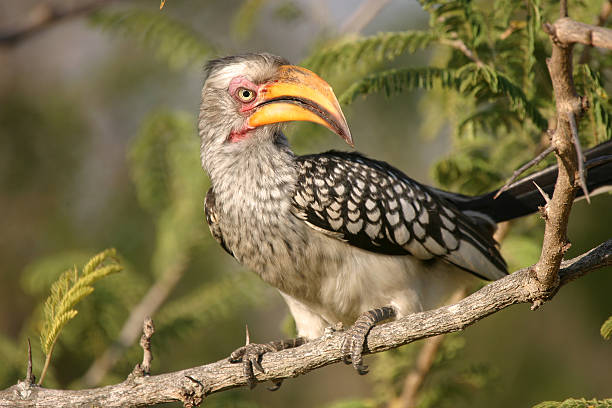
Birding Specials–Treats for Avid Birders
- African cuckoo hawk
- African skimmer
- Bat hawk
- Böhm’s bee-eater
- Boulder chat
- Livingstone’s flycatcher
- Pel’s fishing-owl
- Pennant-winged night jar
- Racket-tailed roller
- Rock pratincole
Best Time for Bird Watching in Majete Wildlife Reserve
While all year round is good for birdlife in Majete Wildlife Reserve, the Wet season from November to April is the best time for bird watchers. This is due to migratory birds in the reserve at this time. The peak time for general wildlife viewing is in the Dry season (May to October).
Best Time To Visit – Majete Wildlife Reserve
July to October of the Dry season are the best wildlife viewing months. At this time, water is scarce so the wildlife tends to gather at the remaining water sources. Keep in mind that October is very hot and not the ideal time for being in the bush.
May to October –Dry Season
- Wildlife viewing is at its best
- Sunshine with very little rainfall
- It never gets very busy in the park
- Malaria risk is minimal
- High-season rates apply from mid-June to mid-November
- Conditions are very dry and the sky is hazy from the dust
- October is unbearably hot
- Mornings are cold from May to August
November to April –Wet Season
- Scenery is green and fresh
- It’s very quiet, the reserve has few visitors, and rates are lower
- It’s the best time for bird watching
- Baby animals are an attraction
- Wildlife viewing is better in the Dry season
- It is very hot and humid
- Malaria is a bigger concern
- Roads become waterlogged and a 4×4 is highly recommended
Weather & Climate – Majete Wildlife Reserve
The climate in Majete Wildlife Reserve is hot and there are two distinct seasons: the Dry season and the Wet season. Conditions are typically tropical – the average temperature is unchanging throughout the year, with the exception of October before the rains (when the temperature rises considerably). From May to September, in the Dry season, it gets considerably cooler.
Dry Season–May to October
The lack of rain means the bush gets drier as the season progresses, with animals congregating around the waterholes. This makes it the best time for wildlife viewing and it improves later into the season. The days are still hot but the nights are cool.
- May – The rains have mostly finished but there is still plenty of water around for the animals and the bush looks lush and inviting.
- June & July – The bush is noticeably drier now. The coolest months of the year with daytime averaging around 27°C/81°F. Nights get cold at 14°C/57°F, which makes for great sleeping conditions. Don’t forget warm clothing for early morning drives – it’s essential.
- August & September – With no rainfall, the bush is beginning to look parched. It is warming up too, and September’s average daytime temperature is 32°C/90°F. Mornings are also warmer.
- October – Daytime temperatures average around 35°C/95°F. Peak temperatures though can be much higher, and the heat can become intolerable. With temperatures around 22°C/72°F, mornings are lovely. The first rain normally falls this month, which sees a welcome drop in temperatures.
Wet Season–November to April
Afternoon showers are common during the warm Wet season and thunderstorms are often a sight to behold. The sky is clear and the bush is lush.
- November – The rains usually start in November and bring much-needed relief from the oppressive conditions. It is extremely hot and humid. The average daytime temperature is 35°C/95°F. Rain mostly comes in afternoon thunderstorms, but not every day.
- December, January, February & March – The wettest months bring a lot of rainfall, although rain doesn’t often last the whole day. It is around 33°C/91°F during the day, while night and early morning temperatures hit an average of 20°C/68°F.
- April – A lovely month in the reserve as the rain is winding down and the countryside is lush and green.
Getting There – Majete Wildlife Reserve
Accessible Majete Wildlife Reserve can fit easily into any itinerary of the country.
Lilongwe International Airport (LLW), about 26km/16mi from the capital city of Lilongwe, is the most likely point of entry into Malawi. A few international flights arrive at Chileka International Airport (BLZ), which is 16km/10mi from Blantyre, and the best option for accessing Majete.
Located in the south of the country, Majete is 410km/255mi from Lilongwe and 60km/37mi from Blantyre. The drive from Lilongwe takes about 5½ hours* and from Blantyre about 2 hours*.
*Driving times are only a rough indication. You should always consider the possibility of significant delays.
Airlines & Ticket Prices
Please check Sky scanner to see which airlines can take you to Lilongwe International Airport (LLW) or Chileka International Airport (BLZ), and what tickets would cost.
Domestic Flights
As part of your package, your tour operator will normally book your domestic and charter flights.
There are currently no scheduled flights to Majete, but Nyasa Express offers charter flights to the reserve.
Malaria & Safety – Majete Wildlife Reserve
Is Malawi Safe?
Majete Wildlife Reserve is a safe destination in our opinion. The experienced guides in the park will take care of your safety when you participate in lodge-organized activities. A self-drive safari in Majete is a viable option as well for those with some experience.
If you are traveling independently around Malawi, be aware of your personal safety in cities and towns between parks and reserves. More information is in the ‘Cities & Urban Areas: Safety Precautions’ link below.
Please read the government travel advisories (see the ‘Safety & Security – Malawi’ link below) for up-to-date information about safety in Liwonde NP and Malawi in general.
Malaria & Vaccinations- Majete Wildlife Reserve
Taking precautions against malaria, as well as receiving the appropriate vaccinations, are advisable before travel to Malawi. Consult your nearest travel clinic, or doctor, for advice.
Using antimalarial medication and a mosquito repellent containing at least 30% DEET are both sensible precautions. Also remember to cover up in the evening by wearing long trousers, sleeves and closed shoes. Malaria is a greater risk in the Wet season (November to April).
Wildlife Viewing in Majete Wildlife Reserve
Wildlife viewing in Majete Wildlife Reserve is generally very safe. You won’t have anything to worry about as long as you follow your guide’s directions. Also read the tips in the ‘Wildlife Viewing Safety Precautions’ link below.
INQUIRE NOW
GENERAL INFORMATION ON A MOZAMBIQUE SAFARI
Book a Customized Safari
Read about
10 Things you Should NOT DO on an African Safari.
What to expect on a safari in Uganda.
Bwindi Impenetrable National Park
How to Choose the Best Tour Operate for Your Safari in Africa
12-Day Gorilla Tracking in Bwindi
Some of our Gorilla and wildlife Safaris
1 Day Jinja Ultimate tour Experience
1 Day White Water Rafting in Jinja
3 Days Bwindi Gorilla Habituation via Rwanda
3 Day Birding Safaris and Photography in Uganda
3 Day Safari to Queen Elizabeth National Park
3 Day fly in Gorilla Trekking Safari from Masai Mara
3 Day Grand Gorilla Trekking Safari
4 Day Chimpanzee and Gorilla Trekking Safari
Recent Posts
Last Minute Deals
Quick booking process
+49 1575 4711313



